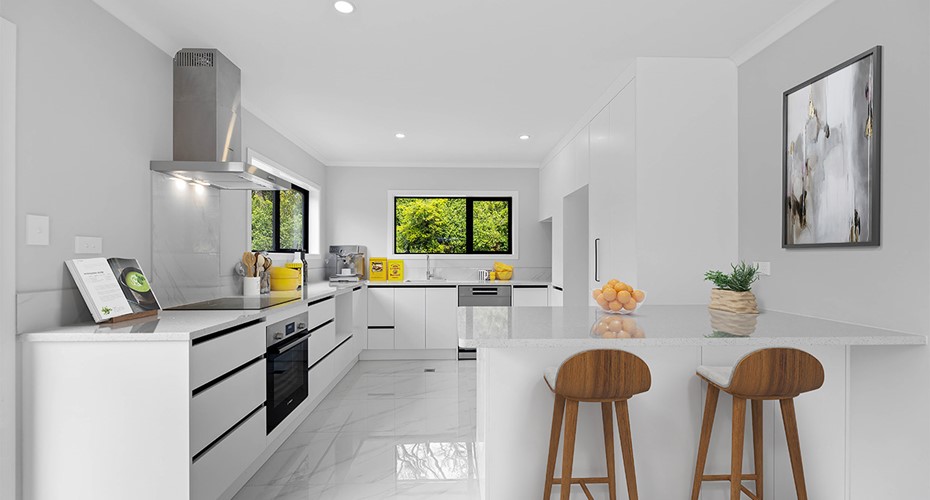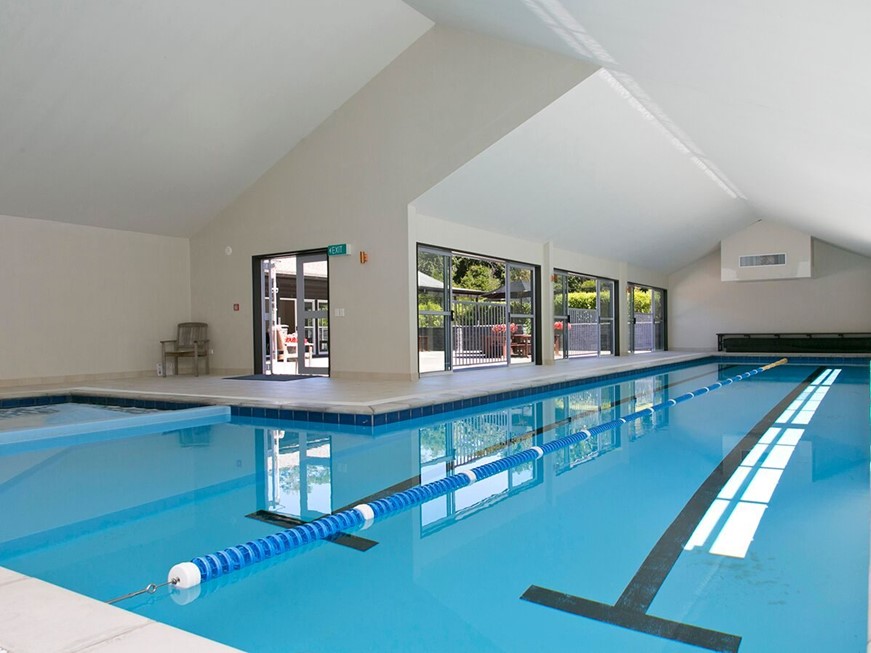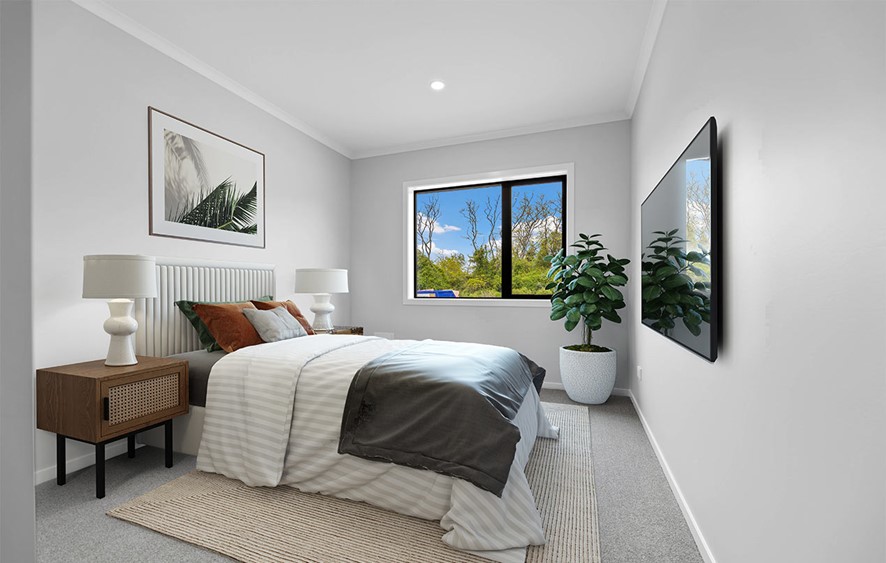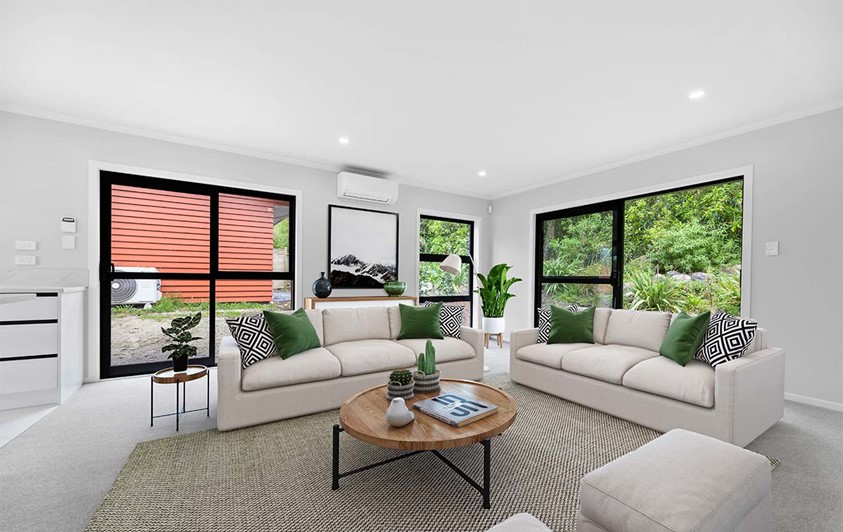A Squirrel case study: Forging a new model for affordable housing in New Zealand

At Squirrel, we love finding ways to do things smarter and differently, especially if it means better outcomes for Kiwi homeowners. And residential housing developer David Duggan is cut from the same cloth.
We sat down with David to talk about his journey bringing an innovative new leasehold development to life on the shores of Lake Taupō — how it was almost derailed, and how partnering with Squirrel ultimately made it happen.
British architect, David Duggan, has had a hand in leading design teams on some pretty incredible stuff over the years. We’re talking about billion-dollar projects — things like skyscrapers and corporate headquarters in London and Dubai, five-star hotel resorts and palaces in the Middle East.
After retiring to Aotearoa a few years back with his Kiwi wife, Deborah, David decided he wanted to turn his attention to something a bit different — an actually affordable development on leasehold land on the shores of Lake Taupō, designed with active retirees in mind.
If replicated, the project model has the potential to transform the way New Zealand approaches our “shortage of affordable housing” conundrum.
After years of negotiations with the landowner on all aspects of the design and having invested significant sums of money to fund the design process and initial infrastructure work on the site, David found himself struggling to access the funds needed to get the actual construction underway.
That is, until he got connected with Squirrel. We were more than happy to help.
So, why is this project a potential game-changer for the New Zealand market?
Well, the way leaseholds work is that even though you’re buying the physical property or dwelling itself, you’re actually only renting the land it sits on.
The major upside is that the up-front price is usually a lot less than you’d pay for freehold properties — woohoo! But then you’re also required to pay what’s known as “ground rent” to the land owner every year you live there.
The way ground rents work varies massively from country to country.
In the UK, the annual ground rent paid to the landowner is usually locked in at just 1% of the value of the property at the time the lease was structured. A typical lease will be for 100 years, after which time the property is returned to the landowner.
Here in New Zealand, things typically work a little differently. Rather than the ground rent being locked in, it will generally go up at periodic intervals — meaning the arrangement favours the landowner a lot more than the tenant or lessee.
In New Zealand’s biggest cities, where leasehold properties are most common (like in Auckland’s CBD, for example) land prices have been on a sharp upwards trajectory in recent decades, to the point where they’ve pretty much doubled in value every seven years. Here ground rents have skyrocketed too.
It means that leaseholds, which could be a really affordable way of going about homeownership, have (in some cases) uncontrolled ground rents, and end up being a prohibitively expensive way to buy.
Enter: David and his master plan.
Located at Acacia Bay in Taupō, the aim of the development was to deliver on three main things: affordability, sustainability and lifestyle
Finding the perfect site happened years earlier. David bought a stunning plot of land within an established gated community, Parawera Estate, on the western shores of Lake Taupō.
The land is the property of the local iwi Hiruharama Ponui, who obtained the original resource consents years ago and oversaw the initial land development.
The facilities at Parawera Estate include a community centre with tennis courts, an indoor swimming pool, sauna, a gym and club house, all set within landscaped gardens — and all just 10 minutes’ drive from Taupō’s town center. The estate is consented for 130 units, as well as a hotel complex.

The facilities available to residents of Parawera Estate include a swimming pool, sauna, tennis courts and gym.
Before construction could get underway on his land, known as Winnie Close, David worked closely with iwi representatives to agree the design of the units — settling on a single-story design within a landscaped setting, with particular emphases on planting around the perimeter of the site to maintain privacy and the storm water design.
Unlike uncontrolled increases in parts of Auckland the ground rent on the units at Winnie Close will increase by 3.5% each year on the 1st January
In 2023, each of the 15 units at Winnie Close pays an annual ground rent of $2,889.97.
So, that means in 2024 the ground rent will be $2,991.12; and in 2032, after 10 years, the ground rent will be $3,938.73 per unit.
Over those 10 years the unit owners will have each paid $33,903.36 in ground rent per unit to the landowner.
A comparable two-bedroom, single story house in Taupō without the community facilities would be priced at approximately $700,000 — or $250,000 more than the units at Winnie Close.

This game-changing leasehold development includes a number of affordable two-bedroom properties in Acacia Bay, on the shores of Lake Taupō.
Even at an average interest rate of 5% (an absolute steal compared to current rates) a 20-year mortgage on that $250,000 would cost the borrower more than $100,000 in interest over the first 10 years. That’s about three times the ground rent on a Winnie Close unit over the same period.
So, no wonder these units are known as affordable housing.
If owners wished to rent their units, rental values are estimated to be between $550 and $600 per week.
The best part is that when the individual houses are sold on to new buyers, all the sale proceeds (including any capital gains) go direct to the owner.
“New Zealand has one of the biggest problems with housing affordability in the world, and it’s going to bring about a catastrophe in time. If only other iwi and developers were working like this, it would make a big difference to the chronic housing problems we have in this country,” says David.
Then, what about the actual homes?
The 15 houses at Winnie Close are located on a private cul-de-sac, at the center of the Parawera Estate gated community.
Each of the single story 2-bedroom units is on its own individual section, with a north facing living room, a private garden (front and back) and off-street parking. There is plenty of visitor parking available, as well as a boat and caravan park for the exclusive use of Winnie Close residents.

Each of the two-bedroom leasehold properties at Winnie Close has a north-facing living room.
The design of the units incorporates the highest standards, including thermal insulation with thermal breaks to the window frames and insulated low-E glass to ensure lower bills.
In other words, a big tick in the box for:
- Affordability – ✅
- Sustainability – ✅
- Lifestyle – ✅
So, you’d think finding funding for a project like this would be a walk in the park, right?
Hmmm, not so much.
After approaching a few of the major banks for a chat, David had had a heap of positive feedback on the development plans — buuuut, not a lot else to show for his efforts.
Because of Government restrictions on lending, the banks just couldn’t help.
“I was able to get an overdraft with my bank of up to $400,000 — and that would’ve been enough to build one unit as a show home, but I never thought that was the right way to go about it.”
“It felt smarter to me to get the first five up and running and start to tap into that sense of community.”
Meanwhile, David had invested thousands of his own money to put in all the necessary infrastructure — roads, sewer, wastewater — but attracting interest from prospective buyers wasn’t easy without a “real” home to show.
So, what to do?
That’s where Squirrel came in…
David had dealt with Squirrel founder, JB, a few years earlier in regards to a different project in central Auckland — and so he got back in touch.
“As soon as I started talking about what I was up to with the development at Acacia Bay, what I was hoping to achieve, JB said he loved the idea. He got it. He coordinated a Squirrel loan of $1.5 million for me through their platform, and probably at the best rates I could’ve gotten anywhere,” says David.
With some of his own capital included, the loan was enough to move forward and complete construction on the first five of the 15 houses within the development.
These days, developers just can’t get funding when it comes to leasehold properties — it’s crazy. I’d never have been able to do this without JB and Squirrel, because I just couldn’t get the money from the bank.
“They’ve stuck their necks out to make this project happen. And this approach to leasehold, working with iwi, on their land, to deliver something that’s both affordable for buyers and gives back to the iwi — it’s something no-one else is doing. It’s historic.”
The first three homes from phase one were snapped up within days of obtaining Construction Compliance Certificate (CCC) from Taupō Council, and the next phase is now available in market. For more information, check out the Property Brokers listings.
Receive updates on the housing market, interest rates and the economy. No spam, we promise.
The opinions expressed in this article should not be taken as financial advice, or a recommendation of any financial product. Squirrel shall not be liable or responsible for any information, omissions, or errors present. Any commentary provided are the personal views of the author and are not necessarily representative of the views and opinions of Squirrel. We recommend seeking professional investment and/or mortgage advice before taking any action.
To view our disclosure statements and other legal information, please visit our Legal Agreements page here.

